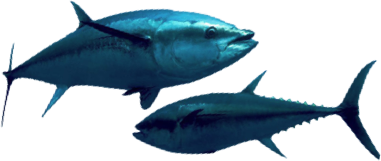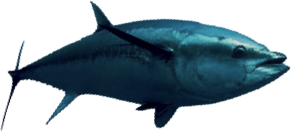Details of the latest assessment of southern bluefin tuna (SBT), including updated fishery indicators, are available from the report of the Twenty-Eighth meeting of the CCSBT Scientific Committee:
A brief report on the Report on Biology, Stock Status and Management of Southern Bluefin Tuna is available at:
The next full stock assessment for southern bluefin tuna is scheduled to be conducted during 2026.
Summary of the Latest Assessment
The Twenty Eighth Meeting of the Scientific Committee noted from the 2023 full stock assessment that:
- The stock, as indicated by relative Total Reproductive Output (TRO), is estimated to be 23% (21-29%) of TRO0;
- The stock remains below the level estimated to produce maximum sustainable yield (MSY);
- Stock status has improved since the previous stock assessments conducted in 2020 which indicated that relative TRO was at 20% (16-24%) of TRO0;
- The fishing mortality rate is below 50 % of the level associated with MSY; and
- The stock has been rebuilding by approximately 5% per year since the low point in 2009.
Table 1: Southern Bluefin Tuna summary of 2023 assessment of stock status.
| Southern Bluefin Tuna Summary of 2023 Assessment of Stock Status1 | |
| Reported 2022 catch | 17,139 t |
| Current status relative to initial | |
| TRO2 | 0.23 (0.21-0.29) |
| B10+3 | 0.22 (0.19-0.26) |
| TRO (2023) relative to TROMSY | 0.85 (0.61-1.29) |
| F/FMSY | 0.46 (0.34-0.65) |
| Maximum sustainable yield | 30,648 (29,152-31,376) tonnes |
| Current biomass (B10+) | 266,187 (247,963-283,275) tonnes |
| Current management measures | Effective catch limit for Members and Cooperating Non-Members: 17,647 t /yr for the years 2021-2023. |
1 Values in parentheses are 10th and 90th percentiles.
2 TRO is the total reproductive output summed over all age classes weighted by their relative individual contribution to reproduction.
3 B10+ is the biomass of fish aged 10 years and over.
Summary of indicators
A review of indicators in 2025 showed some indicators are up while others are down, but there is nothing concerning about any of the trends, and the Extended Scientific Committee concluded that , overall, the outcome for the indicators was positive. Some indicators to potentially keep under close review are:
- The Japanese LL CPUE index (GAM22) which has now increased to the edge of the range for which the MP was tested;
- The gene tagging estimates (absolute abundance index of the age-2 cohort) given the recent reductions in the budget for this project; and
- The age composition of the Australian purse seine catch, which is now dominated by primarily age 2 fish with few fish of age 3.
Annual Review of implementation of the CCSBT Management Procedure
At its 2022 meeting, the ESC used the adopted Management Procedure (MP) to calculate a recommended TAC for the period 2024-2026.
At its 2023 meeting, the ESC followed its process for examining exceptional circumstances and, finding none, confirmed its advice for a TAC of 20,647 tonnes for the 2024-2026 quota block.
At its 2025 meeting, following the process to examine exceptional circumstances, the ESC agreed that the MP (Cape Town Procedure) could be utilised to recommend the TAC for the 2027-2029 fishing years. The ESC ran the MP with the agreed three data inputs (Gene-Tagging, Japanese LL CPUE, and Close-Kin Mark Recapture (CKMR)), and this led to a recommended global TAC for 2027-2029 of 23,647 t/year, which is a 3,000 t (maximum) increase from the current TAC.

